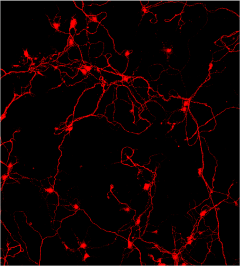Models of Migraine
Winter 2018

Dr. Guido Faas is an experienced basic scientist who was recruited to lead laboratory efforts in the Goldberg Migraine Program. These efforts discover basic mechanisms of migraine and pain as targets for therapy. He has used microchip technologies to develop novel methods for completely noninvasive triggering and monitoring of brain activity. Since these electronics are minimally invasive, brain activities that are more relevant to migraine can be studied over long periods of time. In combination with behavioral assays, such as the study of movement and light-avoidance behavior, we currently focus our studies on how migraine is modulated by day/night rhythms, sleeping patterns, and the menstrual cycle. As we build our experiences with this novel technique, we plan to expand our future research to include the effects of stress and aging on migraine.
Dr. Faas also is developing approaches for the monitoring of brain pressure, and other important parameters of nervous system function. These models are likely to be much better able to predict which treatments will be effective in patients. In parallel studies, Dr. Faas is developing new treatment approaches based on the modulation of brain activity via stimulation applied through the intact skull. This research approach will identify how brain stimulation works to control migraine, optimize stimulation parameters, and develop new uses of brain stimulation and focused ultrasound in migraine care. Such neuromodulation approaches have the potential to be a completely new way for patients to treat pain or migraine via stimulation that they can administer themselves.